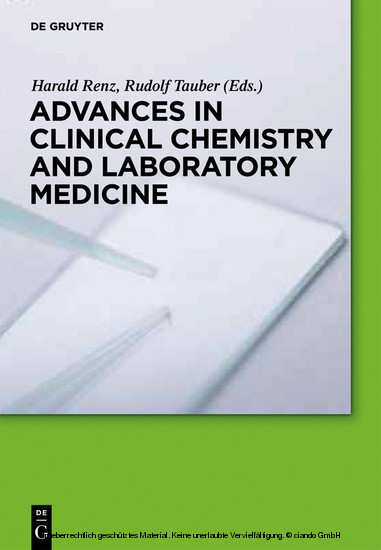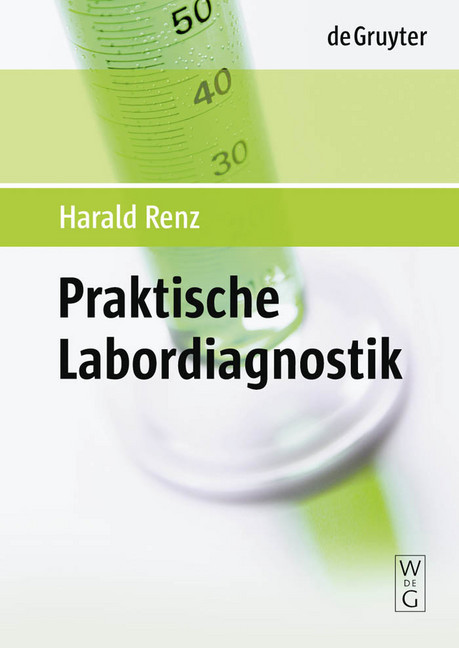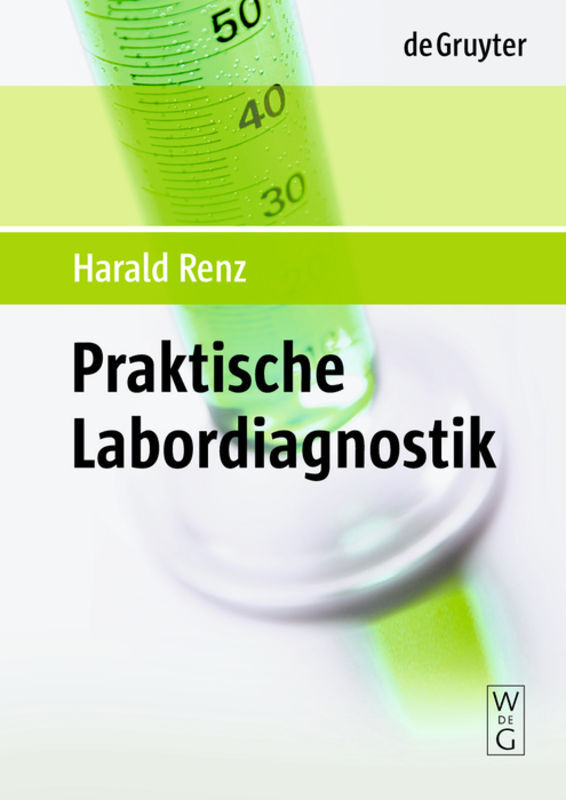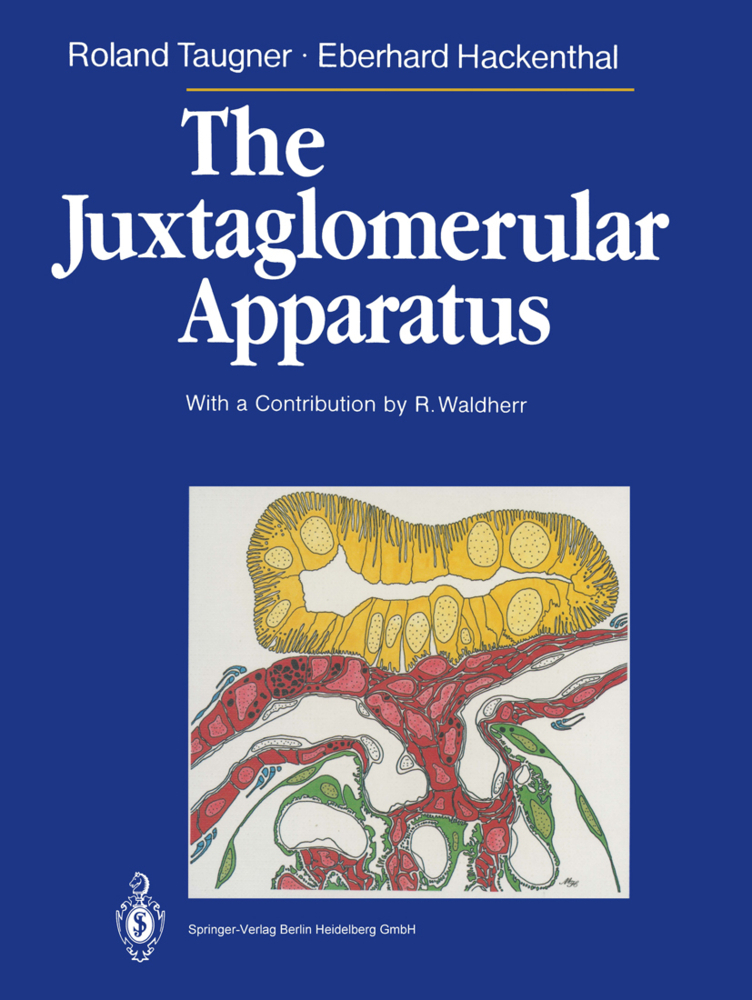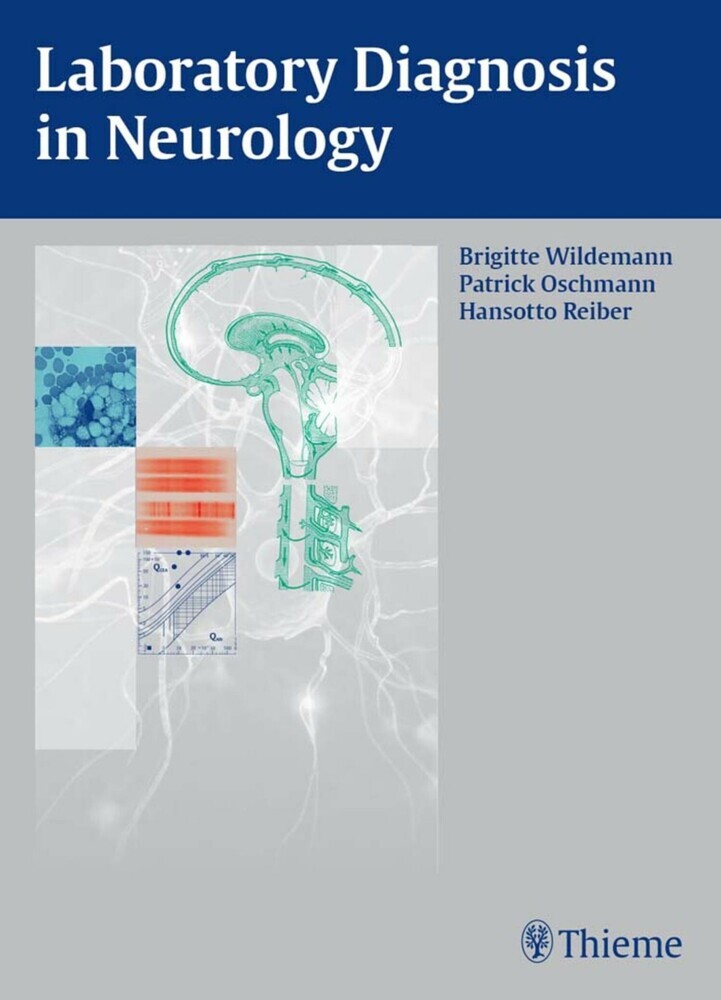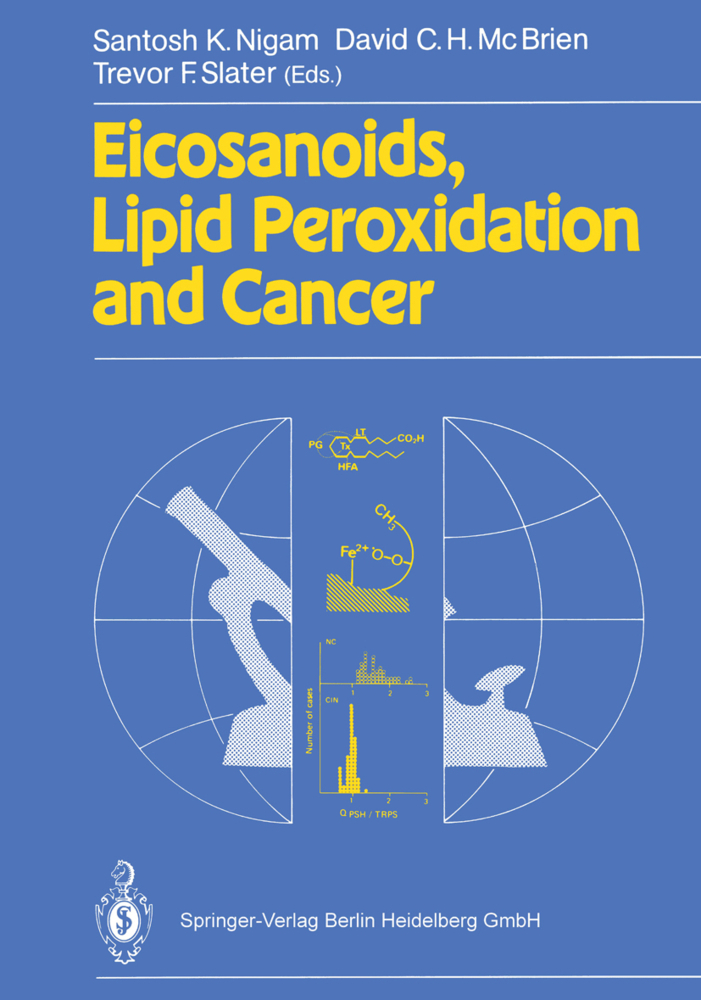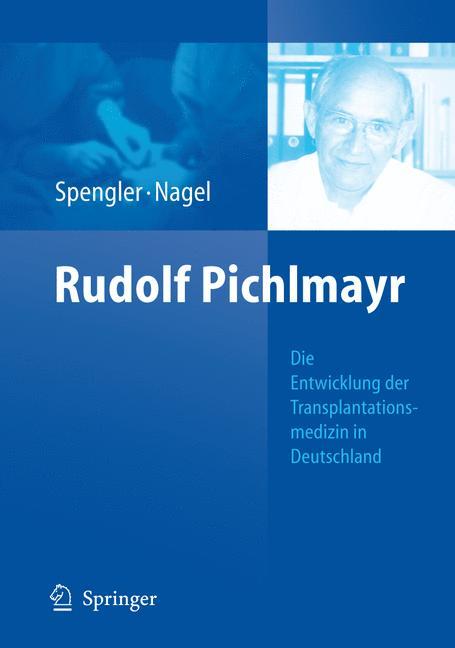Advances in Clinical Chemistry and Laboratory Medicine
Im Mai 2011 fand in Berlin der Weltkongress WorLdMedLab und Euromedlab mit ca. 5.000 Teilnehmern statt. Der von den Kongresspräsidenten Prof. Renz und Prof. Tauber herausgegebene Proceedingsband enthält Beiträge zu allen Plenar- und Symposiumsbeiträgen. Hochrangige Beiträgerspiegeln das aktuelle Wissen zu Themenschwerpunkten wie neurologische Erkrankungen ineiner alternden Gesellschaft, Tumore, organspezifische Funktionsstörungen und die Zukunft der Labormedizin wider.
1;Preface;5 2;1 Plenary Articles;19 2.1;1.1 Proteomics strategies targeting biomarkers for cardiovascular disease;21 2.2;1.2 Influence of pre-examination aspects on result's validity - are ISO 15189 requirements sufficient and clear?;27 2.3;1.3 Posttranslational modifications in tumor diagnosis;30 2.4;1.4 Chronic inflammatory disease: a result of complex gene-environment interaction;34 3;2 Symposium Articles;39 3.1;2.1 Component-array technology diagnostics: a step forward in the study of the sensitization profile of allergic patients;41 3.2;2.2 Pediatric metabolic syndrome: pathophysiology and molecular mechanisms;44 3.3;2.3 Urinary 8-hydroxydeoxyguanosine as a biomarker of microangiopathic complications in type 2 diabetic patients;48 3.4;2.4 Biological variation data: the need for appraisal of the evidence base;53 3.5;2.5 RecoveryELISA - a newly developed immunoassay for measurement of therapeutic antibodies and the target antigen during antibody therapy;56 3.6;2.6 Genotypic prediction of HIV-1 tropism from plasma and peripheral blood mononuclear cells in the clinical routine laboratory;60 3.7;2.7 Expression of a subset of microRNAs in clinically non-functioning pituitary adenomas correlates with tumor size;64 3.8;2.8 Serological markers of gastric pathology;68 3.9;2.9 BNP as a biomarker of cardiac impairment in neonates with congenital heart diseases;72 3.10;2.10 Are 25-hydroxyvitamin D assays fit for purpose?;76 3.11;2.11 Update on multiple sclerosis;79 3.12;2.12 Microalbuminuria and urinary retinol binding protein as markers of subtle renal injury in visceral leishmaniasis: sensitivity, specificity and predictive values of the immunoturbidimetric technique;83 3.13;2.13 Occult hepatitis B virus infection: diagnosis and significance;86 3.14;2.14 Unmet needs in chronic kidney disease testing;90 3.15;2.15 Towards a national chronic kidney disease testing program;93 3.16;2.16 Biochemistry and metabolism of vitamin D;96 3.17;2.17 Diagnostics of thalassemia;100 3.18;2.18 The specific roles of assessors during accreditation;103 3.19;2.19 Laboratory diagnosis of hereditary spherocytosis;106 3.20;2.20 Quantification of blood folate forms using stable-isotope dilution ultra performance liquid chromatography tandem mass spectrometry;109 3.21;2.21 Evaluation of the new Marburg cerebrospinal fluid model with human spondylopathies;113 3.22;2.22 E-learning experiences of national societies of clinical chemistry and laboratory medicine;117 3.23;2.23 The experience of Médecins Sans Frontières in laboratory medicine in resource-limited settings;120 3.24;2.24 Screening, identifying, and quantifying small molecules by hyphenated mass spectrometry in toxicology and drug monitoring - an update;126 3.25;2.25 Analytical quality in the Latin America area;129 3.26;2.26 Standardization in molecular diagnostics: definitions and uses of nucleic acid reference materials;134 3.27;2.27 Profiling of antiphospolipid antibodies - association with cerebrovascular events in APS;138 3.28;2.28 Plasma levels of soluble CD30 and CD40L in pediatric patients after liver transplantation;142 3.29;2.29 Diagnostic and prognostic value of presepsin (soluble CD14 subtype) in emergency patients with early sepsis using the new assay PATHFAST presepsin;146 3.30;2.30 Diagnostic workup of primary aldosteronism;152 3.31;2.31 What should the clinical laboratory and the toxicologist-pharmacologist offer the poisoned patient?;156 3.32;2.32 Novel aspects of von Willebrand factor - platelet glycoprotein IB interaction and signaling;160 3.33;2.33 Medical emergencies: what is the laboratory's role?;161
| ISBN | 9783110224641 |
|---|---|
| Artikelnummer | 9783110224641 |
| Medientyp | E-Book - PDF |
| Copyrightjahr | 2012 |
| Verlag | Walter de Gruyter GmbH & Co.KG |
| Umfang | 163 Seiten |
| Sprache | Englisch |
| Kopierschutz | Digitales Wasserzeichen |

